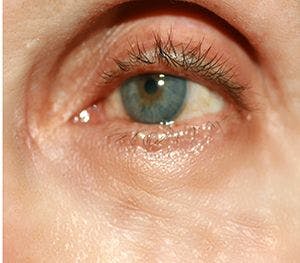- Acne
- Actinic Keratosis
- Aesthetics
- Alopecia
- Atopic Dermatitis
- Buy-and-Bill
- COVID-19
- Case-Based Roundtable
- Chronic Hand Eczema
- Chronic Spontaneous Urticaria
- Drug Watch
- Eczema
- General Dermatology
- Hidradenitis Suppurativa
- Melasma
- NP and PA
- Pediatric Dermatology
- Pigmentary Disorders
- Practice Management
- Precision Medicine and Biologics
- Prurigo Nodularis
- Psoriasis
- Psoriatic Arthritis
- Rare Disease
- Rosacea
- Skin Cancer
- Vitiligo
- Wound Care
Publication
Article
Dermatology Times
Gene expression profiling for skin cancer brings promise, pitfalls
Author(s):
Gene expression profiling (GEP) has the potential to improve melanoma prognostication, but shortcomings remain, one expert says.
Gene expression profiling (GEP) has the potential to improve melanoma prognostication, says an expert, but shortcomings remain.
GEP tests specifically look at messenger RNA (mRNA) levels expressed in tumors, an indicator of which target genes are “on,” says Elizabeth Berry, M.D. She serves as an assistant professor and director of the Multidisciplinary Pigmented Lesion Clinic in the Oregon Health & Science University Department of Dermatology, Portland.
“The thought is that gene expression profiling tests might be able to tell which patients will develop metastases in the future,” Dr. Berry says.
Conversely, a portion of patients with thick melanomas never develop any further disease. GEP could provide an additional level of testing to identify such patients, she says, and to help determine which patients may benefit from adjuvant therapy or increased surveillance.
In dermatology, says Dr. Berry, the key question with thin melanomas is determining which patients would benefit from sentinel lymph node (SLN) biopsy and which could avoid this procedure.
“Each specialty has its own set of questions,” she says.
However, she adds, GEP test developers are trying to address all these questions simultaneously.
Leading melanoma GEPs include DecisionDx-Melanoma, also called the 31-GEP (Castle Biosciences), the eight-GEP (MelaGenix) and the clinical-pathologic (CP)-GEP (SkylineDx and Mayo Clinic). All three tests very have promising early data, says Dr. Berry.
“But we need to proceed with caution,” she says. “We need to look carefully at the data to find where they fit best so that we are not hurting people in the process of trying to propel the field forward.”1
Shortcomings that presently affect GEP tests to one extent or another include small sample sizes (often lacking power calculations), study populations that do not represent real-world stage distributions, follow-up times insufficient to track delayed metastases and inconsistent use of multivariate models that make between-study comparisons impossible.
“The most frustrating part is the inability to look under the hood. When you’re looking at the statistical analysis, are they using a dichotomous or continuous variable? And it’s hard to tell in some of the tests what cutoffs they are using for significance in GEP levels. That lack of transparency makes the data difficult to interpret,” she says.
Warts notwithstanding, says Dr. Berry, the GEP platforms coming to market should not be discounted.
“As clinicians, we have a duty to ensure promising technology with the potential to benefit our patients is implemented both rapidly and safely,” she says. “This may include tolerating some uncertainties while we find the best uses for the tests. The ordering provider needs to be well-versed in these uncertainties and limitations to best counsel his or her patients.”
Next steps, she says, should include larger validation studies of the type that have happened in GEP tests for breast cancer.
DISCLOSURES:
Dr. Berry reports no relevant financial interests.
REFERENCE:
1. Grossman D, Kim CC, Hartman RI, Berry EG, et al. Prognostic gene expression profiling in melanoma: necessary steps to incorporate into clinical practice. Melanoma Manag. 2019;6(4):MMT32. Published 2019 Dec 17. doi:10.2217/mmt-2019-0016.

Newsletter
Like what you’re reading? Subscribe to Dermatology Times for weekly updates on therapies, innovations, and real-world practice tips.






























